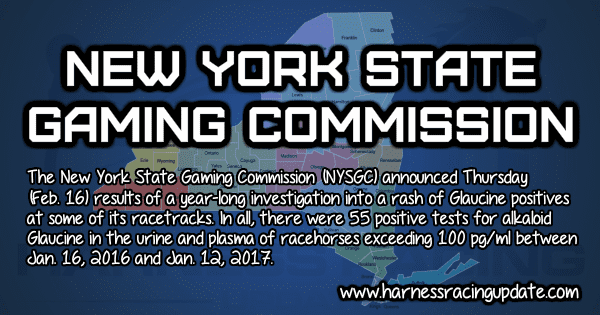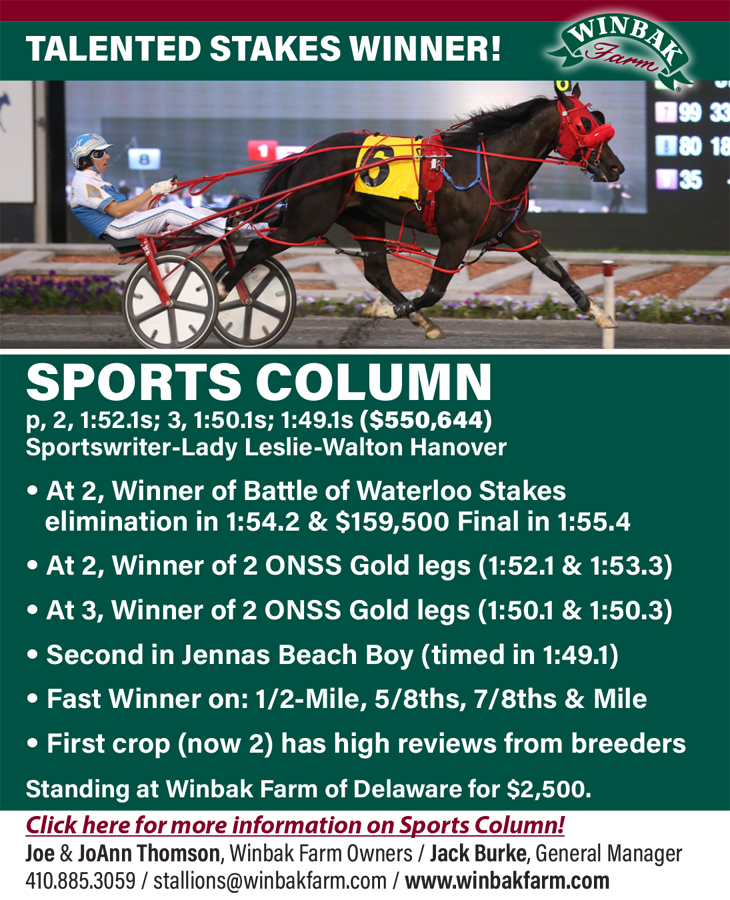New York announces Glaucine positives
A year-long investigation produced 55 positive tests for Glaucine — including 11 horses from seven trainers that forced disqualifications that require purse money to be returned — but Richard Johnson is the only trainer with a horse that tested positive at a high enough level to trigger a fine and suspension.
by Dave Briggs
The New York State Gaming Commission (NYSGC) announced Thursday (Feb. 16) results of a year-long investigation into a rash of Glaucine positives at some of its racetracks. In all, there were 55 positive tests for alkaloid Glaucine in the urine and plasma of racehorses exceeding 100 pg/ml between Jan. 16, 2016 and Jan. 12, 2017.
Twenty-six trainers had at least one positive test for Glaucine above that threshold — 37 positives came at Yonkers Raceway, nine at Monticello, three at Buffalo and six at thoroughbred track Finger Lakes — but just one trainer, Richard Johnson, was given a fine and suspension.
Johnson twice raced the horse Rubber Duck at Yonkers Raceway with Glaucine levels far greater than 1 ng/ml. In addition to the disqualification and purses of $61,660 to be returned, Johnson was handed a 45-day suspension and $1,500 fine.
The NYSGC found nine other horses with Glaucine levels higher than 500 pg/ml, but less than 1 ng/ml. For these cases, the Commission ordered that the horses be disqualified from the applicable races and any purses won by the owners of those horses be returned, totaling $103,530.
The trainers with horses testing positive for Glaucine between 500 pg/ml and 1 ng/ml are: Johnson (World Cup and Canbec Kingkazimir); Ron Burke (Journeyman and Allbeef N Nobull), Mark Ford (Journeyman, two weeks after Burke had a Glaucine positive with the same horse), Julie Miller (FrankandJoanne), Gilbert Garcia-Herrera (Straighttalkxpress), Rob Harmon (Party On The River) and Scott Biccum (Mercurio N).
A complete list of horses that had elevated levels of Glaucine may be found here.
A NYSGC press release said, “as is standard practice, all 55 impacted horses were immediately put on the Stewards List, which prevents a horse from entering any future races until the horse is tested and found negative for the presence of any illegal substance.
“Glaucine, also known as Boldine Dimethyl Ether or 1,2,9,10-Tetramethoxyaporphine, is a potent drug with the potential to affect race performance by means of its anti-inflammatory, antitussive, bronchodilatory and hallucinogenic properties. Glaucine has not been approved as a drug for any use by the U.S. Food and Drug Administration. The Association of Racing Commissioners International (ARCI) does not include Glaucine in its Uniform Classification Guidelines for Foreign Substances.”
The release said the NYSGC began finding elevated Glaucine levels in January 2016, but reserved issuing rulings pending further investigation. Over the last 12 months, the NYSGC and the New York Drug Testing and Research Laboratory have collaborated with other jurisdictions and national racing organizations to conduct research on Glaucine, which may be naturally found in wood shavings used to line horses’ stalls.
New research conducted by New York and Pennsylvania officials substantiate that Glaucine levels of 500 pg/ml or greater in a horse on race day indicate that the horse was introduced to a potentially efficacious dose of the substance on race day. Therefore, the Commission’s Rule 4120.2(n) applies, which states that no drugs or medications – other than those specifically exempted — may be administered by any means within one week of the scheduled post time of the race in which the horse is to compete and that it is the trainer’s responsibility to prevent such ingestion within such one-week period.
Most recently, the Racing Medication & Testing Consortium’s (RMTC) Glaucine Task Force and Science Advisory Committee – both of which include New York State Equine Medical Director Scott E. Palmer, VMD – recommended applying two thresholds for the presence of Glaucine in a racehorse. The Commission’s actions now – and going forward – are based on these standards and disqualifying a horse that violates such thresholds.
The Commission will continue to place horses that test in excess of 100 pg/ml for Glaucine on the Stewards List and require those horses to test below such concentration before being permitted to race again. Horses testing in excess of 500 pg/ml will incur penalties as described above.
“New York is once again leading the way when it comes to preserving integrity in horse racing,” said NYSGC executive director Robert Williams. “The Commission took deliberative action based upon solid research to hold trainers accountable for substances found in horses under their care. We call on other jurisdictions around the country to follow suit to send a clear message: we will tolerate nothing short of fair and safe horse racing.”
Equine medical director Dr. Palmer said environmental contamination is avoidable by the adoption of simple stable management practices:
• Stalls should not be bedded with bulk wood shavings that may contain tulip poplar material on a chronic basis or during the week that a horse races.
• Do not administer any product or plant material, whether purchased online, compounded or otherwise, that may contain Glaucine.
— with files from the New York State Gaming Commission
















